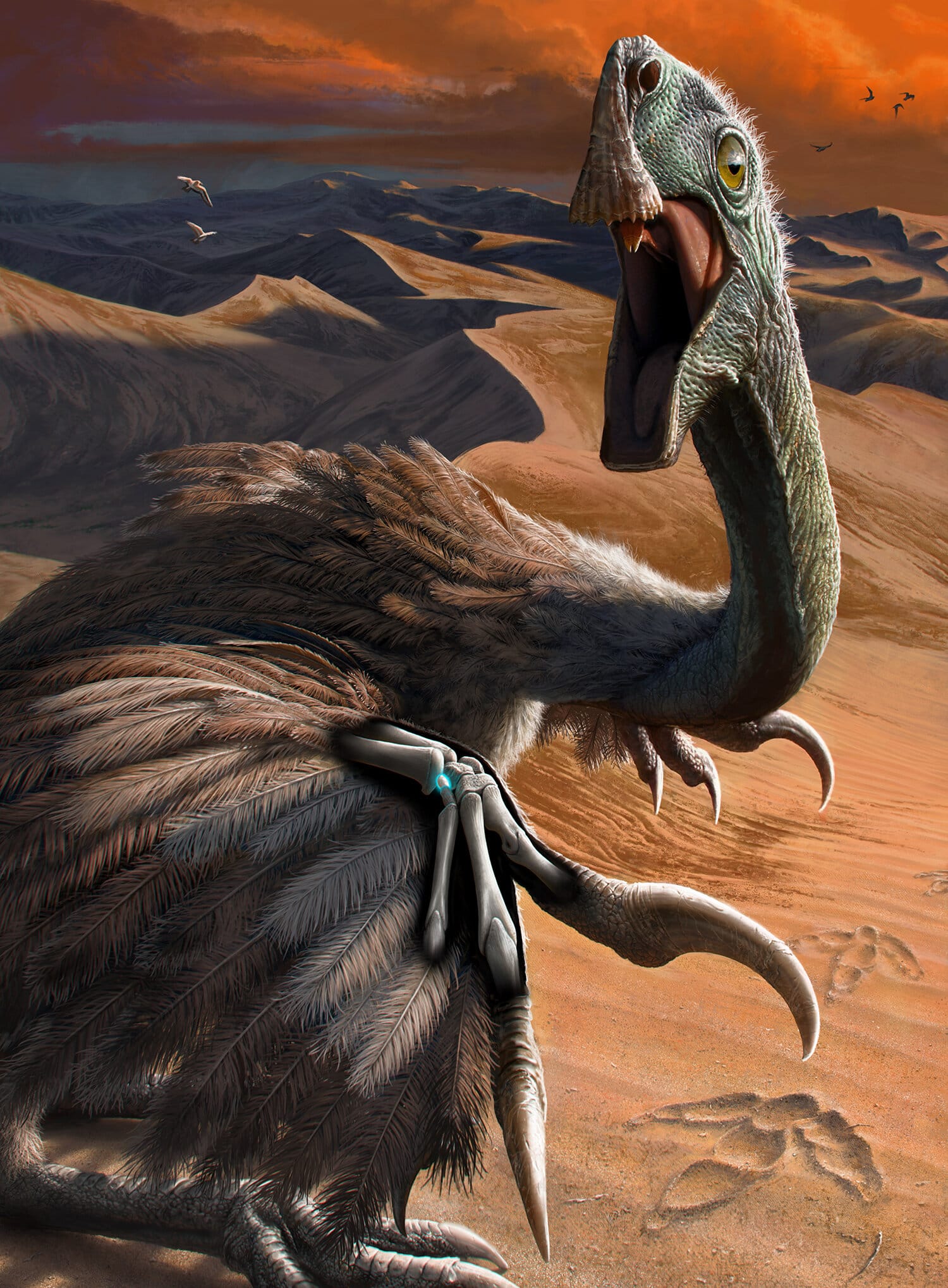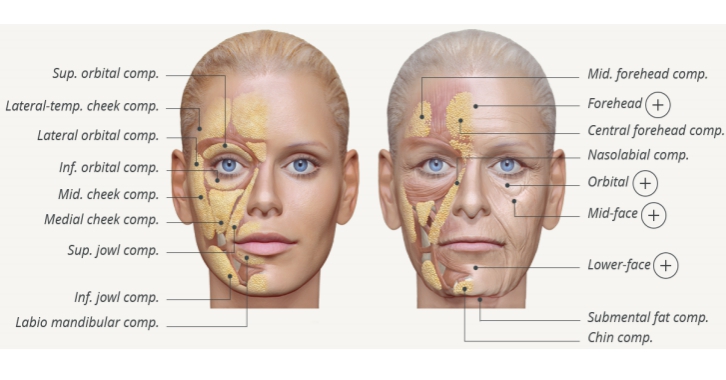Imagine, for a moment, that you’re standing at the edge of a prehistoric world. The ground shakes as massive theropod dinosaurs—those swift, birdlike hunters—move through the dense foliage. But what if I told you that, in addition to their sharp talons and fearsome jaws, these creatures were hiding a crucial feature that might have been the key to one of the most extraordinary evolutionary leaps in history: flight.
For years, scientists believed that the origins of flight in dinosaurs were tied to the complex evolution of feathers and wing structures. But new research has revealed that the true breakthrough may have happened much earlier, within the bones of their wrists.
A team of researchers, led by James Napoli, Ph.D., of Stony Brook University, has made a groundbreaking discovery that could redefine how we think about the evolution of flight in dinosaurs. In a study published in Nature, they identified a crucial carpal bone, the pisiform, in the wrists of two theropod dinosaurs—an unexpected find that challenges previous assumptions about their anatomy and the origins of flight.
The discovery, featuring fossilized specimens of a troodontid and an oviraptorid, sheds light on a key feature that many thought was unique to birds—offering a glimpse into the step-by-step evolution of flight.
The Pisiform: A Forgotten Key to Flight
At the heart of this discovery lies a small but pivotal bone: the pisiform. In modern birds, this wrist bone is more than just a skeletal feature; it plays an essential role in enabling flight. But its story began much earlier, long before the first bird took to the skies.
In birds, the pisiform originally evolved from a sesamoid bone, similar to the kneecap, and migrated into a critical position within the wrist. Its placement is not random—it helps birds fold their wings automatically when the elbow bends, and its unique V-shaped notch allows the hand bones to clasp together, preventing dislocation during flight. Without it, the dynamics of bird flight simply wouldn’t work.
However, for a long time, this bone’s exact evolutionary timeline remained elusive. Researchers had believed that only birds possessed this specialized pisiform bone. That is, until now.
A Surprising Discovery in Dinosaur Wrists
Through high-resolution CT scanning and digital 3D visualizations, Napoli and his team uncovered the pisiform in two theropod dinosaur fossils—a troodontid (a birdlike raptor closely related to Velociraptor) and an oviraptorid (an odd, toothless omnivore with a long neck and beak). These fossils, preserved in exceptional detail, revealed something that no one had expected: dinosaurs with a migrated pisiform—an ancient precursor to the flight-essential bone found in birds today.
This discovery, according to Napoli, represents the first-ever identification of the migrated pisiform in non-bird theropod dinosaurs. It suggests that the evolution of this wrist bone—critical for the mechanics of flight—began much earlier than scientists had realized, deep in theropod history.
“We believe this is the first time a migrated pisiform in a non-bird meat-eating dinosaur has been identified,” said Napoli, a vertebrate paleontologist and evolutionary biologist at Stony Brook University.
What’s in the Wrist?
The idea that dinosaurs—especially meat-eating theropods—might have had wrist bones capable of facilitating flight raises some fascinating questions. If flight was evolving long before feathers, could these theropods have been experimenting with primitive forms of flight or gliding? And could the migration of the pisiform bone be the starting point of these attempts?
The researchers believe that the migration of the pisiform could have set the stage for the eventual development of automated flight mechanisms seen in modern birds. When the bone moved into place within the wrist joint, it may have allowed for greater flexibility and control over wing folding—an important step in the evolution of powered flight.
“It is intriguing that experimentation with flight in these creatures appears only after the pisiform migrated into the wrist joint,” Napoli explains. “This may have established some of the automated mechanisms we see in living birds today, but we need further research to confirm this hypothesis.”
A Step Toward Understanding the Evolution of Flight
The team’s findings also suggest that the migration of the pisiform may not have occurred exclusively within the lineage of birds, but rather within a group of theropods called Pennaraptora—which includes the dromaeosaurids (think: Velociraptor), troodontids, and oviraptorosaurs. These are the very same theropod groups in which the earliest feathered wings and flight traits began to emerge.
In essence, the pisiform migration may have been part of a stepwise process that laid the groundwork for flight, far deeper in theropod history than previously understood. The fact that bird-like traits—such as feathers and an enhanced brain—appear throughout this group suggests that the mechanisms of flight were evolving piece by piece, through complex interactions between anatomy and environment.
Napoli and his team suggest that while we don’t yet know exactly how many times flight evolved in dinosaurs, this pisiform migration was clearly a foundational step in the evolutionary journey toward powered flight. Birds may not be the only creatures to have experimented with flight during the Mesozoic era.
Rewriting the Evolution of Flight
This new perspective on the theropod wrist and the evolution of flight offers an exciting opportunity for further research. The team’s findings are a paradigm shift, helping paleontologists connect the dots between the evolution of feathers, the migration of bones, and the eventual ability to soar through the skies.
As more fossils are analyzed and technology like CT scanning continues to improve, we can expect to uncover even more evidence of the evolutionary steps that led to one of the most awe-inspiring abilities in nature: flight.
“The construction of the avian wrist is no exception,” Napoli and his colleagues write. “It follows topological patterns laid down by the origin of Pennaraptora.”
As the mystery of flight unfolds in the bones of ancient dinosaurs, we are reminded that evolution is not a single leap, but a series of small, interconnected steps. Each bone, each muscle, each feather tells a story of adaptation and innovation. And as scientists dig deeper into the past, we’ll continue to uncover the untold stories of creatures that once walked the Earth—and the wings that may have allowed them to fly.
Reference: James Napoli et al, Reorganization of the theropod wrist preceded the origin of avian flight, Nature (2025). DOI: 10.1038/s41586-025-09232-3. www.nature.com/articles/s41586-025-09232-3






